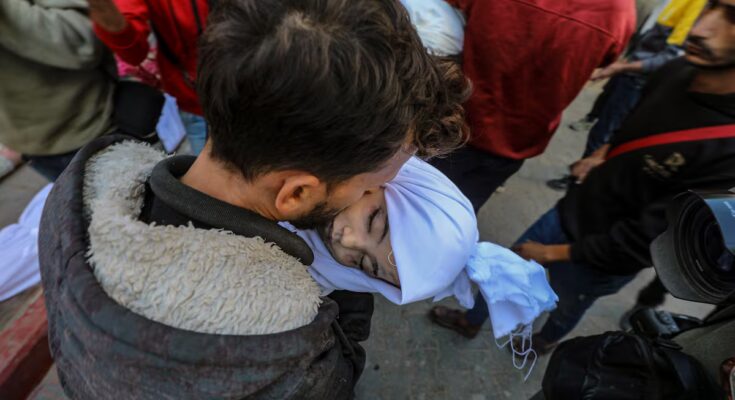The reality on the ground has once again demonstrated what the current ceasefire in Gaza consists of, in the same week in which the United Nations Security Council approved a resolution – inspired by Donald Trump’s plan – to deploy an international security force in the Strip and create an international organization to monitor its compliance. In the past 24 hours, the Israeli army killed 32 Palestinians, including 12 minors and eight women, and wounded 88 others, according to hospital counts. The last five, including a child, this Thursday near Khan Yunis.
During the month and a half of truce, the Israeli army bombs the Strip almost daily, as it has done for a year in Lebanon, the other territory where on paper there is a ceasefire which, in practice, only concerns the weakest party: Hamas, in the first case; Hezbollah, in the second.
They tend to be specific attacks in the face of what Israel describes as reorganization and rearmament attempts. And they become much more widespread and lethal when the army reports a previous ambush against its troops. This is what happened on that particularly bloody 28 October, with more than a hundred Palestinians killed (mostly women and minors) in just 14 hours of bombing. And this Wednesday, when it said it attacked targets across the Palestinian enclave after Hamas members opened fire on its soldiers.
Gaza’s medical services reported at least 27 deaths during the day, while Hamas denounces the “dangerous escalation” and urges Donald Trump’s government – which decides in fact the fate of the truce: to “immediately exert serious pressure” on its main ally in the Middle East, Israel.
He also urged the other three guarantors of the ceasefire (Egypt, Qatar, Turkey) to “fulfill their obligations” and to force Prime Minister Benjamin Netanyahu to “stop his violations that threaten the path of the ceasefire.” Since early October, fire from drones, fighter jets, machine guns and tanks has killed more than 300 people in Gaza, according to calculations by the Hamas government’s Ministry of Health.
Israel has also failed to meet other commitments it made: it keeps the Rafah crossing with Egypt closed and allows the entry of fewer humanitarian trucks than those signed in the agreement (a minimum of 600 per day), among others. Humanitarian aid agencies have urged him to allow more tents in, even as winter and several consecutive days of rain have turned the displacement camps into cold mud. Twenty NGOs put the number of tents they have been able to set up in Gaza at around 19,000, while the director of the Network of Palestinian Civil Society Organizations, Amjad al Shawa, estimates that the population needs 300,000 new tents. Hundreds of thousands of families live together in less than half of the most densely populated land on the planet.
Last week, the United Nations Office for Humanitarian Affairs conducted a survey of the urgent needs of displaced people on the coast of Khan Younis and Al Mawasi, where around 4,000 families live. Preliminary results showed that rising sea levels are reaching tents and threatening to flood the entire area. The November winds have already knocked down several of them and most are forced to use the sea as a toilet, he points out in his latest report on the situation, published on Tuesday.
Blocks
The other half of Gaza is deserted and under Israeli control, with no withdrawal date. The one and the other are separated by the so-called Yellow Line, due to the color with which it was drawn in the ceasefire agreement and which Israel has marked with concrete blocks and effectively treating as some kind of definitive or, at least, long-term border.
This Thursday, the Hamas press office assured that Israeli soldiers and armored vehicles advanced into the eastern part of Gaza City, moving these blocks about 300 meters. Even when they began to be deployed last month, satellite images showed an appropriation of territory beyond the route of the line.
Hamas, meanwhile, has returned the vast majority of the last 28 bodies held captive by Gaza militias, but the pace has slowed this week. Only three remain. Journalists from the Strip (Israel has prevented free entry to the foreign press since it launched its invasion in October 2023, following the Hamas attack) report that members of the Palestinian militia party and the International Committee of the Red Cross are looking for one of the three this Thursday in Zeitún, a neighborhood of the capital.



